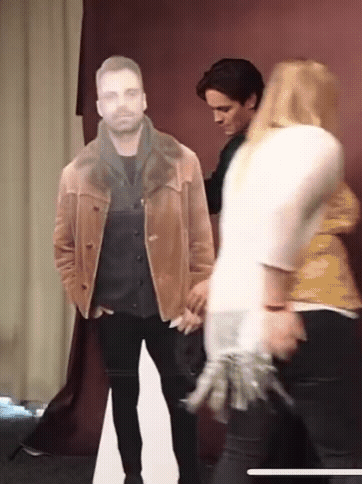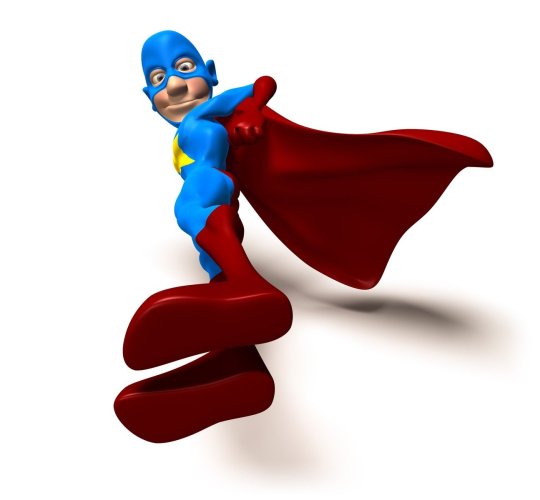#BookAuthors StoryTelling
Explore tagged Tumblr posts
Text
Creating a Well-rounded Character. - What is a Character?

Making a character for your story has many steps. I’ll walk you through some of them in a series of articles.
Firstly, what is a character? Are there different types?
In a novel, a character is a fictional person or being that plays a role in the story. Characters are often the driving force behind the narrative, and their thoughts, actions, and interactions shape the plot and engage readers. They are typically developed with unique personalities, backgrounds, motivations, and relationships to make them believable and relatable.
Yes, there are different types of characters in a novel, each serving different functions within the story. Here are a few common character types:
1. Protagonist: The central character around whom the story revolves. They typically face challenges, pursue goals, and undergo personal growth or transformation. 2. Antagonist: The character or force that opposes the protagonist, creating conflict and obstacles to overcome. Antagonists can be individuals, groups, or even internal struggles. 3. Supporting characters: These characters complement the protagonist and help move the story forward. They often have distinct personalities, roles, and relationships with the main character. 4. Foil characters: Foils are characters who contrast with the protagonist, highlighting their qualities and characteristics. They can emphasize different perspectives or motivations. 5. Dynamic characters: These characters undergo significant changes or growth throughout the story, often as a result of their experiences or interactions. 6. Static characters: Static characters remain relatively unchanged throughout the narrative, maintaining consistent traits and behaviors. 7. Round characters: Round characters are complex and multi-dimensional, with a mix of strengths, weaknesses, and internal conflicts. They often feel more realistic and relatable. 8. Flat characters: Flat characters are less developed and have fewer complexities, serving specific roles or functions within the story.
These character types provide a framework for understanding and categorizing the various individuals within a novel, but keep in mind that characters can also exhibit traits from multiple types or evolve over time. Ultimately, a well-written novel typically features a diverse cast of characters that contribute to the story’s depth and impact.
Remember, they’re more than just a cardboard cutout!

#writingtip#bookwriting#AuthorAdvice#WritingProcess#WritingAdvice#CreativeWriting#BookAuthors StoryTelling#NovelWriting#WritingInspiration#WritingCraft#CharacterDevelopment#Plotting
2 notes
·
View notes
Photo

Getting into the mood for dealing with those feckin’ subplots...
#writing#writer#creative writing#writing a novel#bookauthor#books#creating#creating stories#storytelling
2 notes
·
View notes
Text
🤗🥰No, I'm Not David😰👺
amazon I am here with very interesting some Vella serialized story which give you a good moment just read once.
What are the rich and famous really like? What do they do and say in unguarded moments? Who hasn’t wondered about the renowned and legendary but would stumble if actually in their presence. Here’s Barry Beckham who knows how to get an audience with the celebrated, telling us about how and when he crossed paths with them. He also shares what others have reported to him directly or indirectly as observers-on-the-spot if you will. “They” are some of the most legendary American personalities in business, arts and entertainment, politics, and education. In No, I’m Not David, But I’ve Known a Lot of Famous People, Beckham offers a literary fete for readers who love intimate details and insights about the renowned.
David Rockefeller, practicing his speech, got to the alliterative line where he was to say that a maxim was true from “Terre Haute to Tehran.” But he mispronounced Terre Haute. His speech coach told him that the second syllable in Terre Haute was silent. “Oh,” replied Rockefeller, “I’m afraid that I’m more familiar with Tehran.”
As a 21-year-old student at Brown University, Beckham interviewed novelist John Cheever. He asked the author of The Wapshot Chronicle what advice he would give to young writers. “For God’s sake, stop,” replied Cheever.
In every chapter of No, I’m Not David, But I’ve Met a Lot of Famous People, Barry Beckham’s writing resonates with delicious observations, downright idolization, and even some tittle-tattle. Describing his encounters and interviews with Miles Davis, Bill Cosby, David Rockefeller, John F. Kennedy, Jr., Edward Albee, John Cheever, Ruth Simmons, and many others.
There are 6 episodes into the two links. Please click on these links and read enjoyable some stories. 1. Two Years in the Interior:- https://tinyurl.com/mxr3ftm5 2. No, I'm Not David:- https://www.amazon.com/kindle-vella/product/B098331YBW

#amazon#amazon book#amazon books#amazonkindle#kindle books#KindleReads#amazon vella#vella#story#episodes#USA#USA Network#california#novel#storyteller#manhattan#David#interior#bookauthor#booklover#memoir#new york#romance books#childrenbook#story episode#life stories
0 notes
Video
instagram
A direct link to the book: https://www.amazon.de/Ms-Jasmine-Rosa-Hintsala/dp/9526907043/ref=sr_1_1?dchild=1&keywords=you+surely+have+a+long+neck&qid=1598950852&sr=8-1 😊 Since Sebastian’s story is finally available in English, be prepared to see a lot of material related to the story from now on. 😁
#artist#artistsoninstagram#artists#art#watercolorartist#author#booksforkids#illustratedbook#booksforchildren#childrenbook#kidsbooks#giraffe#animalart#animalstory#story#storybook#storytelling#kidsstory#yousurelyhavealongneck#mybook#mystory#artistsofinstagram#writer#bookauthor#illustratorsoninstagram#illustrator
8 notes
·
View notes
Photo

⚔️🍎𝟮 𝗧𝗥𝗨𝗧𝗛𝗦 𝗔𝗡𝗗 𝗔 𝗟𝗜𝗘⚔️🍎 Uncover the truth and the lie. Will you be able to guess which statement is false? What's the lie? 1) My story is a rewrite. 2) Osbius used to be a villain. 3) The original story was written in 2000. Make your guesses in the comments below! ❤️👇 🍎⚔️🍎⚔️ #2truthsandalie #guessthelie #bookish #storytelling #villain #bookishlove #bookishlife #villains #bookishpost #rewrite #bookishfeature #bookishcommunity #bookishgirl #truthandlies #twotruthsandalie #originalstory #bookcommunity #bookwormlife #bookstagramcommunity #booklover #booksaddict #fictionwritingcommunity #fictionlovers #fictionbooks #bookishlovers #bookloversunite #authorlove #instaauthor #bookauthor #writerswritesnippets (at Naperville, Illinois) https://www.instagram.com/p/Cn4ogdGLIz8/?igshid=NGJjMDIxMWI=
#2truthsandalie#guessthelie#bookish#storytelling#villain#bookishlove#bookishlife#villains#bookishpost#rewrite#bookishfeature#bookishcommunity#bookishgirl#truthandlies#twotruthsandalie#originalstory#bookcommunity#bookwormlife#bookstagramcommunity#booklover#booksaddict#fictionwritingcommunity#fictionlovers#fictionbooks#bookishlovers#bookloversunite#authorlove#instaauthor#bookauthor#writerswritesnippets
0 notes
Text
Creating Well-rounded Character - Protagonists

Creating a memorable protagonist is crucial for engaging readers and making your story impactful. Here are some tips to help you craft a memorable protagonist:
1. Unique qualities: Give your protagonist distinctive traits, characteristics, or quirks that set them apart from other characters. This can include physical attributes, personality traits, skills, or flaws.
Eg.
* Physical attributes: Your protagonist can have distinctive physical features that make them memorable. This could be anything from an uncommon eye color or hair texture to a birthmark or scar. For example, you might have a protagonist with striking violet eyes or a protagonist with a lightning-shaped scar on their cheek. • Personality traits: Explore unique personality traits that make your protagonist stand out. They could be exceptionally witty, fiercely determined, or unusually empathetic. For instance, your protagonist might have an unparalleled talent for seeing patterns and connections that others miss, or they might possess an unwavering belief in the power of kindness. • Special skills or talents: Consider giving your protagonist a skill or talent that sets them apart. This could be a natural ability for music, a remarkable proficiency in martial arts, or an extraordinary aptitude for problem-solving. For example, your protagonist might have a gift for manipulating fire or possess an exceptional talent for mimicry, allowing them to flawlessly imitate any voice or accent. • Quirks and habits: Infuse your protagonist with distinctive quirks or habits that make them memorable. These can be small idiosyncrasies or unique behaviors. Perhaps your protagonist always wears mismatched socks, collects unusual objects, or has a habit of humming when they’re deep in thought.
2. Motivations and goals: Develop clear and compelling motivations and goals for your protagonist. What drives them? What do they want to achieve? These desires should be relatable and create a strong sense of purpose.
3. Internal conflicts: Give your protagonist internal conflicts or struggles that they must grapple with. This adds depth and complexity to their character, making them more relatable and human.
4. Growth and development: Allow your protagonist to undergo growth and transformation throughout the story. They should face challenges and learn valuable lessons that shape their character arc.
5. Flaws and vulnerabilities: Ensure your protagonist has flaws and vulnerabilities that make them more relatable and authentic. Perfection can make a character less interesting, so explore their weaknesses and how they overcome or navigate them.
6. Relationships and dynamics: Develop meaningful relationships between your protagonist and other characters. These interactions can shape their development, reveal different facets of their personality, and provide opportunities for conflict or growth.
7. Engaging backstory: Create a backstory that adds depth and context to your protagonist. Explore their history, experiences, and past relationships to shape who they are in the present.
8. Memorable voice: Craft a distinct and compelling narrative voice for your protagonist. Their thoughts, dialogue, and perspective should resonate with readers and leave a lasting impression.
9. Relatability and empathy: Ensure your protagonist evokes empathy and a sense of relatability. Readers should be able to connect with their struggles, emotions, and experiences.
10. Challenging circumstances: Place your protagonist in challenging and meaningful situations that test their strengths, force them to make tough choices, and push them outside their comfort zone.
Remember, a memorable protagonist is one who resonates with readers, captures their imagination, and remains with them long after they've finished reading your story. Strive to create a well-rounded, complex, and relatable character that audiences can root for and connect with on an emotional level.
#Writingtips#Bookwriting#authoradvice#writingprocess#creativewriting#bookauthors#storytelling#novelwriting#writinginspiration#writingcraft#characterdevelopment#plotting#editingtips#publishingadvice
1 note
·
View note
